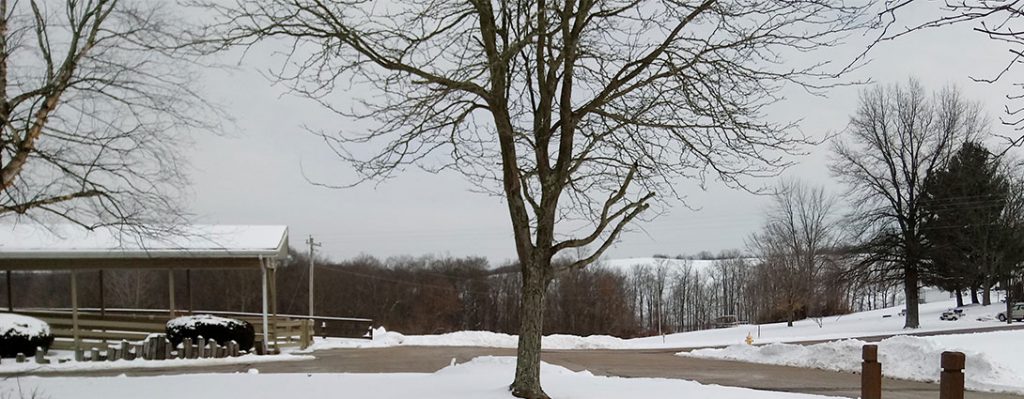Wear proper footwear. Proper footwear should place the entire foot on the surface of the ground and have visible treads. Avoid a smooth sole and opt for a heavy treaded shoe with a flat bottom.
Plan ahead. While walking on snow or ice on sidewalks or in parking lots, walk consciously. Instead of looking down, look up and see where your feet will move next to anticipate ice or an uneven surface. Occasionally scan from left to right to ensure you are not in the way of vehicles or other hazards.
Use your eyes and ears. While seeing the environment is important, you also want to be sure you can hear approaching traffic and other noises. Avoid listening to music or engaging in conversation that may prevent you from hearing oncoming traffic or snow removal equipment.
Anticipate ice. Be weary of thin sheets of ice that may appear as wet pavement (black ice). Often ice will appear in the morning, in shady spots or where the sun shines during the day and melted snow refreezes at night.
Walk steps slowly. When walking down steps, be sure to grip handrails firmly and plant your feet securely on each step.
Enter a building carefully. When you get to your destination such as school, work, shopping center, etc., be sure to look at the floor as you enter the building. The floor may be wet with melted snow and ice.
Be careful when you shift your weight. When stepping off a curb or getting into a car, be careful since shifting your weight may cause an imbalance and result in a fall.
Avoid taking shortcuts. Shortcuts are a good idea if you are in a hurry, but may be a bad idea if there is snow and ice on the ground. A shortcut path may be treacherous because it is likely to be located where snow and ice removal is not possible.
Look up. Be careful about what you walk under. Injuries also can result from falling snow/ice as it blows, melts, or breaks away from awnings, buildings, etc.
– Iowa State University, Environmental Health and Safety
When winter weather strikes, drivers face out-of-the-ordinary challenges when they get behind the wheel. Snow, slush or icy roads are involved in nearly one in four weather-related vehicle crashes.1 These conditions can make it harder for drivers to see, slow down and stop – all factors that can increase the chances of an accident.
If you must travel during winter weather, preparing your car in advance, knowing the forecast and driving based on road conditions are three key ways to help you drive more safely. Following are some winter driving safety tips to help you prepare for the elements – before you face them – on the road.
Travelers Insurance offers some great safe driving tips at this link –
https://www.travelers.com/resources/auto/safe-driving/winter-driving-safety-tips


